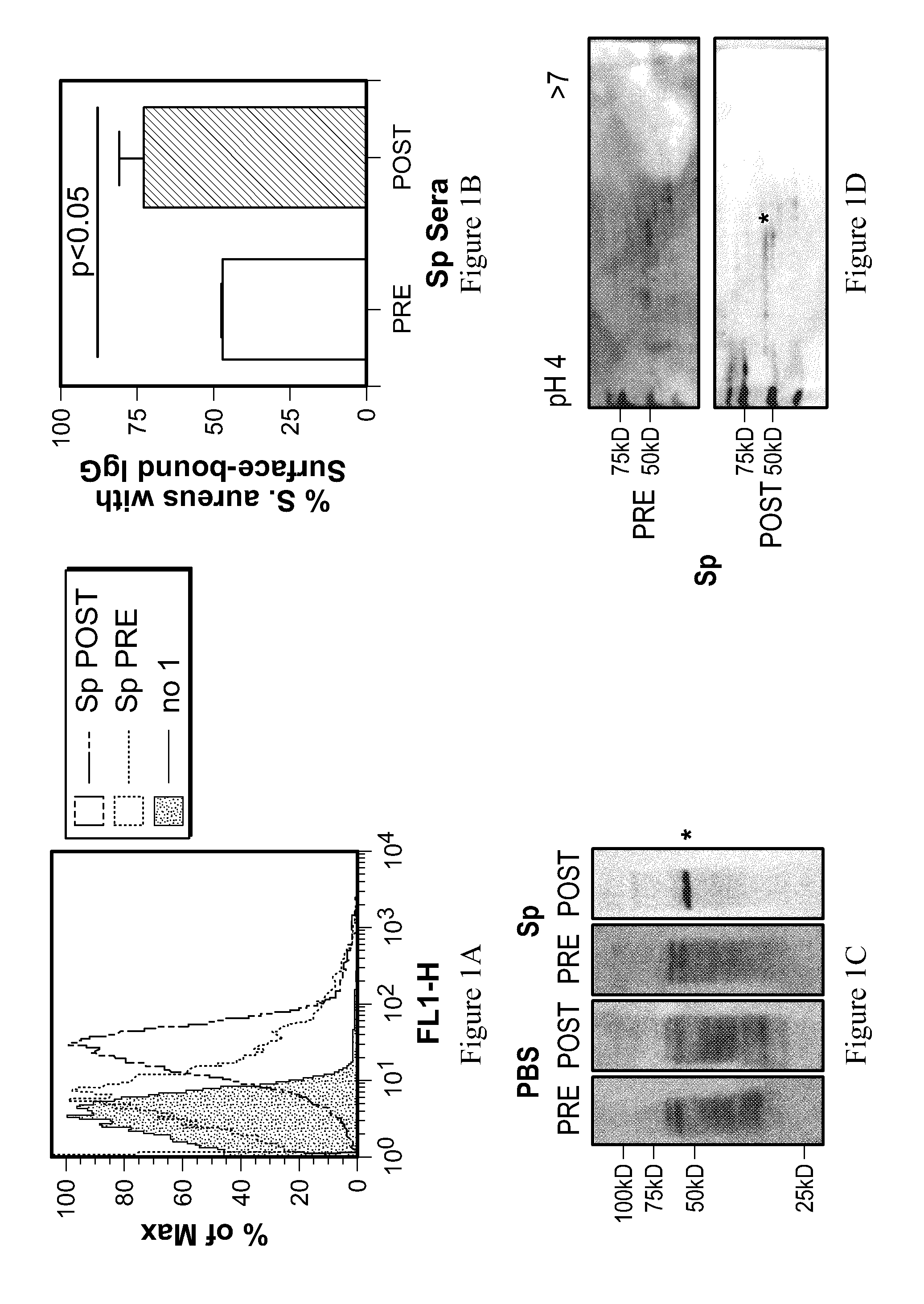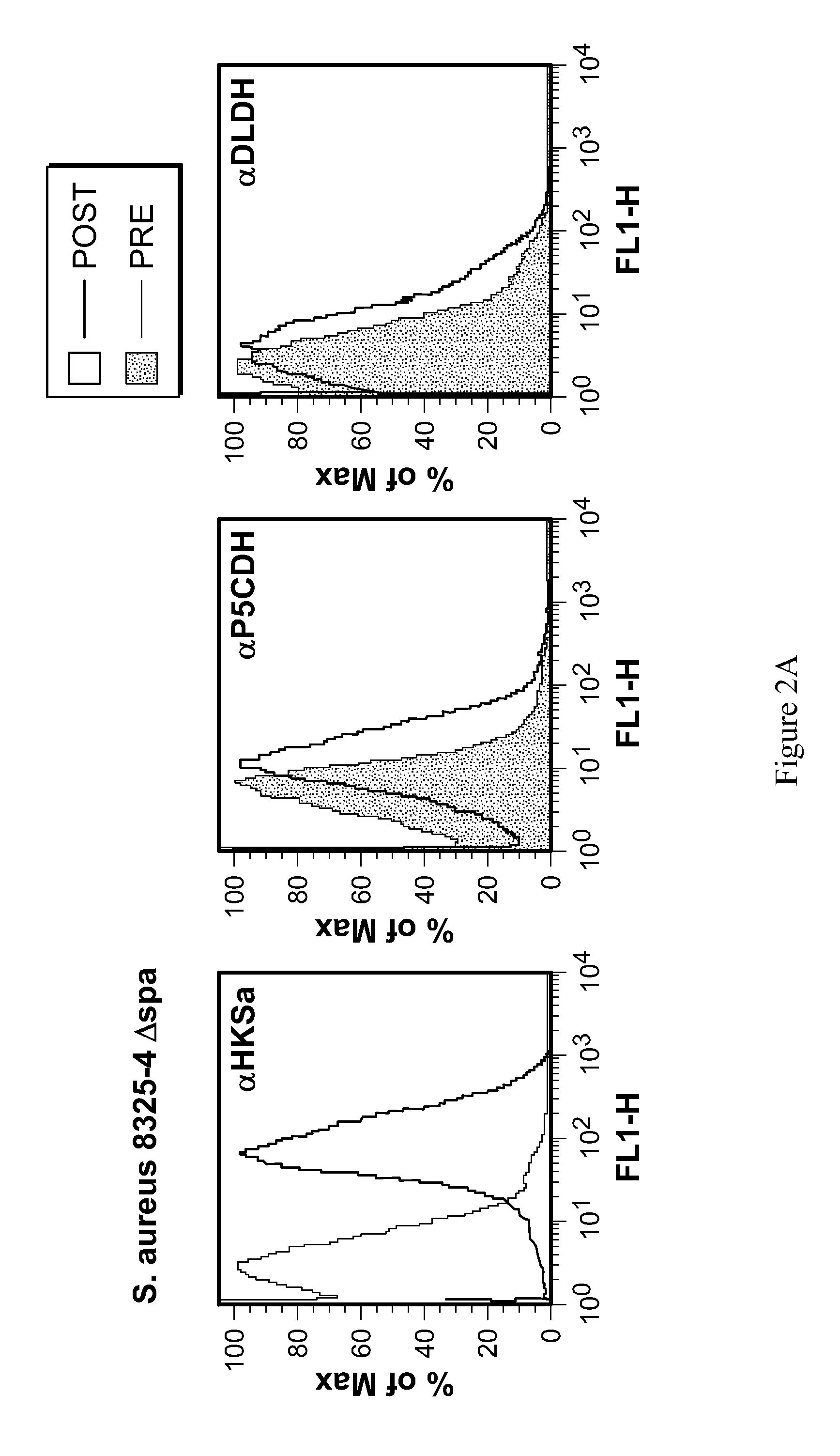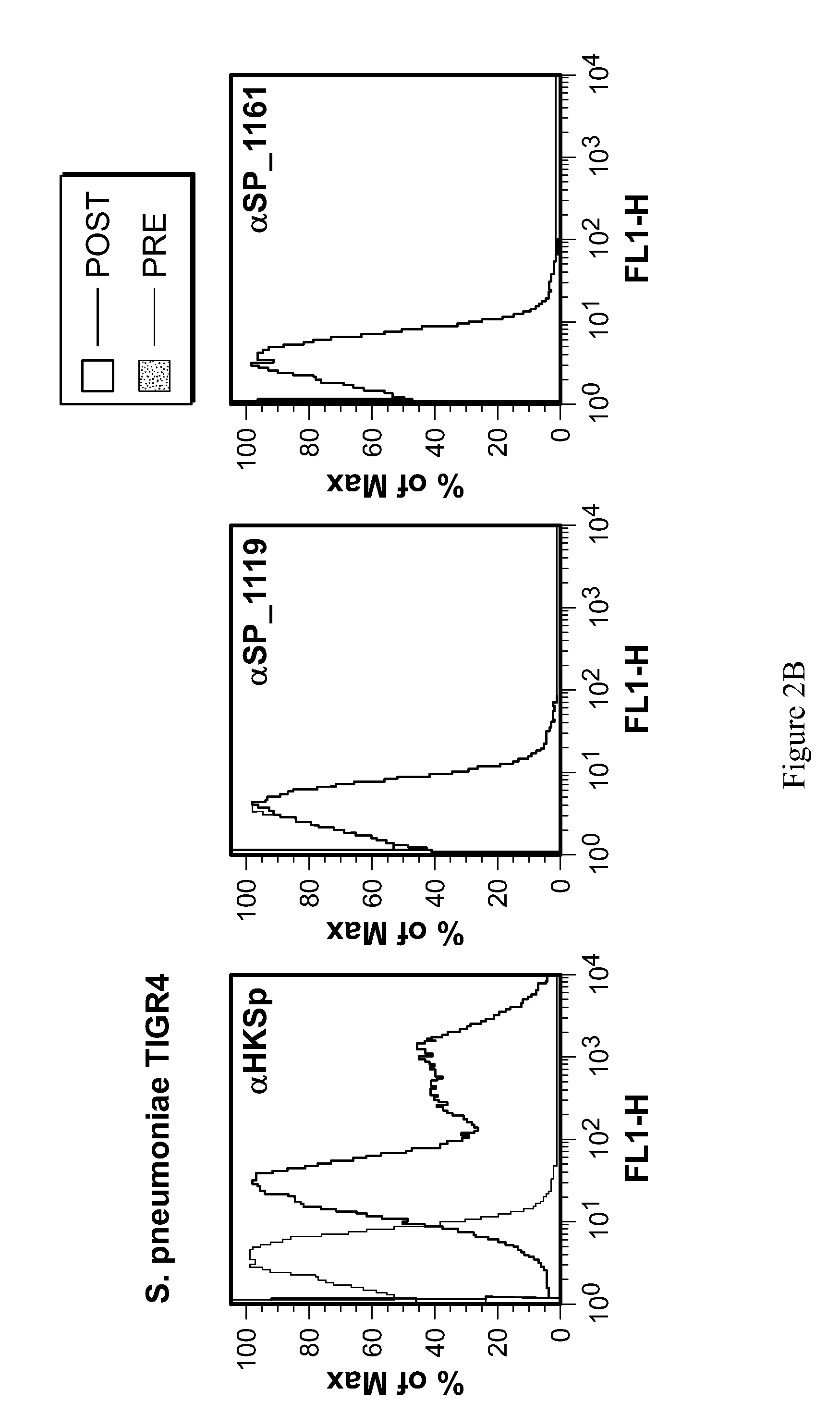Methods for preventing and treating staphylococcus aureus colonization, infection, and disease
a staphylococcus aureus and colonization technology, applied in the direction of antibody medical ingredients, spray delivery, aerosol delivery, etc., can solve the problems of severe limitation of the choice of therapy, wound infections and infections associated with catheters and prosthetic devices, etc., to improve the likelihood of treating the colonization and/or infection, improve the likelihood, and increase the effect of effectiveness
- Summary
- Abstract
- Description
- Claims
- Application Information
AI Technical Summary
Benefits of technology
Problems solved by technology
Method used
Image
Examples
example 1
Identification of S. Aureus Protein Targets of Cross-Reactive Pneumococcal Antibody
[0119]To determine whether cross-reactive antibodies recognize the surface of S. aureus, flow cytometry was used measure surface-bound IgG on live S. aureus. S. aureus 8325-4 Δspa cells were incubated with sera from mice before or after colonization with S. pneumoniae TIGR4 (FIG. 1). Following a wash to remove unbound antibody, surface-bound IgG was labeled using FITC-conjugated anti-mouse IgG and analyzed on a FACS Calibur. The percent of S. aureus cells with surface-bound IgG was calculated by comparison to a no sera control.
[0120]To identify specific S. aureus protein targets of cross-reactive pneumococcal antibody, western immunoblots were used to probe S. aureus 8325-4 Δspa lysates with a 1:500 dilution of sera taken from mice before and after intranasal colonization by S. pneumoniae TIGR4. Sera from mice inoculated with PBS were used as negative controls. For all western blots, S. aureus lysates...
example 2
Expression of Candidate Proteins and Generation of Specific Antisera
[0124]Once S. aureus target proteins P5CDH and DLDH and their S. pneumoniae homologs were identified (FIG. 2), each of proteins were expressed independently for further study. Standard pET vector (pET-29b) expression technology was used in E. coli BL21 to generate polyhistidine tagged recombinant constructs of each candidate. His-tags were used for purification of desired proteins using immobilized metal affinity chelate chromatography. Inclusion of a thrombin cleavage site between the protein of interest and its his-tag allowed for his-tag removal by thrombin following protein purification. Antisera specific to the purified protein candidates were generated at Cocalico Biologicals, Inc. by immunizing two New Zealand white rabbits with each S. aureus target or S. pneumoniae immunogen, according to standard commercial protocols.
example 3
Confirmation of Accessibility and Conservation of S. Aureus Targets
[0125]To confirm the surface exposure of S. aureus candidates, specific P5CDH and DLDH antisera was incubated with live S. aureus 8325-4 Δspa for 1 hr at 37° C. Bacterial cells were then washed and incubated with AP-conjugated anti-rabbit IgG to detect surface bound IgG by flow cytometry. Naïve rabbit sera was used as a control. To determine the surface exposure of S. pneumoniae candidates, specific SP—1119 and SP—1161 antisera was incubated with live S. pneumoniae TIGR4WT and Δcps. Bacterial cells were then washed and incubated with AP-conjugated anti-rabbit IgG to detect surface bound IgG by flow cytometry. Naïve rabbit sera was used as a control (FIG. 2).
[0126]To determine the degree of conservation of candidate S. pneumoniae immunogens and S. aureus targets, genomic comparisons were made using the numerous publicly accessible whole genome sequences for each species (Table 2). DLDH and P5CDH antisera were used in ...
PUM
| Property | Measurement | Unit |
|---|---|---|
| pH | aaaaa | aaaaa |
| antibiotic resistance | aaaaa | aaaaa |
| resistance | aaaaa | aaaaa |
Abstract
Description
Claims
Application Information
 Login to View More
Login to View More - R&D
- Intellectual Property
- Life Sciences
- Materials
- Tech Scout
- Unparalleled Data Quality
- Higher Quality Content
- 60% Fewer Hallucinations
Browse by: Latest US Patents, China's latest patents, Technical Efficacy Thesaurus, Application Domain, Technology Topic, Popular Technical Reports.
© 2025 PatSnap. All rights reserved.Legal|Privacy policy|Modern Slavery Act Transparency Statement|Sitemap|About US| Contact US: help@patsnap.com



